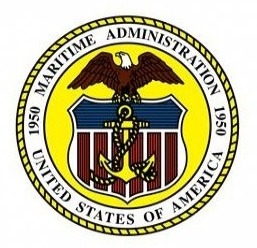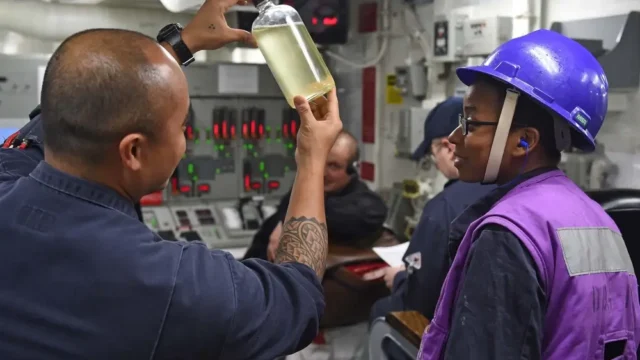Life Cycle Engineering Experts Propose an Innovative Solution for Reducing Greenhouse Emissions in the Maritime Industry
solutions
sectors

Reducing greenhouse gas emissions (GHG) from ships is difficult and complex, with many pathways under consideration. Many maritime industry leaders are evaluating changing the fuels from petroleum-derived to renewable or non-carbon-based, which may require significant fueling infrastructure and ship fuel-system design and may impact the cruising range and operation of vessels. That’s why Life Cycle Engineering’s subject matter experts have proposed to the U.S. Department of Transportation Maritime Administration’s (MARAD) Maritime Environmental and Technical Assistance Program (META) to evaluate an innovative and quicker solution for the short term: comprehensive shipboard carbon capture solutions to reduce GHG and combat climate change. The project was awarded by MARAD because it supports the broader efforts within the META Program to investigate and address maritime de-carbonization solutions.
Reducing greenhouse gas emissions from ships is difficult and complex
In 2018, the International Maritime Organization (IMO) adopted an initial strategy to reduce total annual GHG emissions from international shipping by at least 50 percent by 2050 compared to 2008 levels. Under the Biden Administration, the U.S. Government has committed to work aggressively with IMO to achieve GHG emission reductions. In April 2021, Special Presidential Envoy for Climate, John Kerry, announced that the U.S. was committing to work with IMO to adopt a goal of reaching zero emissions from international shipping by 2050.
On April 15th, 2021, the U.S. Congress held a Coast Guard and Maritime Transportation Subcommittee hearing on de-carbonization of the maritime industry. Congress recognized how difficult and complex the de-carbonization issue will be for the maritime industry. Several key elements identified during the hearing included the cost of new standard compliance, U.S. participation in international regulation setting, federal investment requirements in ports and shore side infrastructure, and assessing and investing in research and development of alternative fuel technologies.
Most of the maritime de-carbonization focus has centered on replacing hydrocarbon fuels with fuels that do not contain carbon in their molecules. Principally, hydrogen and ammonia are the primary fuels of interest. To make them a reality, however, two things will be required – replacing the entire existing hydrocarbon fuel logistics stream and the equipment that is used to convert the energy contained in fuel to power vessels.
The logistics stream includes the fuel production, delivery, and storage aspects both onshore and afloat. Over the past 11 years, LCE has supported the U.S. Navy on their alternative fuel program. One of their initial principles for the insertion of non-petroleum derived alternative fuels was that it had to be interchangeable, so the current logistics stream would not require any modifications. The conversion costs and program risks for conversion of this part of the fuel process was both daunting and beyond the Navy’s direct control. Therefore, by clearly making this a requirement, the Navy could focus the testing and qualification specifically on how these alternative fuels work on the legacy and future propulsion and power generation equipment.
Hydrogen and ammonia (fuels that do not contain carbon in their molecules) unfortunately do not occur naturally and need to be produced. The preferred method for producing h3 is currently natural gas, which is transported, stored, and used onboard as liquefied natural gas (LNG). All of the systems supporting this hydrocarbon fuel pathway – from the bunkering station to the exhaust stack outlet – will require some re-engineering, rethinking, and in some cases be re-imagined. Many ships and vessels whether they operated inland, coastal, or deep sea will need to be replaced, retired, or retrofitted to achieve the goals of IMO and the U.S. Administration to implement renewable or zero hydrocarbon fuels.
An innovative solution for the short term: comprehensive shipboard carbon capture solutions to reduce GHG and combat climate change
Because of how complex the de-carbonization issue will be for the maritime industry, Life Cycle Engineering’s Tom Risley (and the LCE team based in Pittsburgh, PA) and Process & Equipment Development Corporation (PEDCO, Inc.) also located in Pittsburgh, have proposed to MARAD examining reducing GHG from a slightly different angle. What if, instead of modifying all of the systems and relying on the shore-side infrastructure systems to come online, the problem is worked from the exhaust end of the system? What if Carbon Capture and Carbon Storage could be a quicker solution for the short-term (while research and development continues for the hydrocarbon systems) and even part of the long-term solution for those vessels that may never be able to convert? This is precisely following the U.S. Department of Energy’s current funded initiatives to immediately begin to reduce GHG emissions through Carbon Capture and Sequestration. Ships are built to last decades and many older ships still have years of life left in them. This alternative solution could provide a means for these ships to meet a goal of net-zero emissions even if they cannot be fully retrofitted to convert to a non-hydrocarbon fuel.
The scope of work being performed for MARAD:

- LCE and team members will evaluate the opportunities and technologies available for onboard carbon capture and storage as an alternate methodology to decarbonizing marine vessels. The objective is to gather and prepare a review of the carbon capture and storage technologies that are under development worldwide.
- Using this technology review as the baseline, feasible technology insertion concepts will be prepared applying these technologies to identified vessel types. A screening tool will be developed to refine the applications and down select the best fit of technology for the vessels.
- LCE will form a stakeholder group comprised of vessel operators, technology companies, and interested government entities that will meet to discuss technology, applications, and ongoing efforts worldwide.
- A techno-economic analysis will be performed to provide an estimate for a cost in $/ton CO2 removed. In addition, capital costs of the carbon capture and storage system, energy costs/penalties, and other operating and maintenance requirements will be identified.
Significance:
When complete, this project will enable MARAD to do a more detailed and direct comparison with de-carbonization of the fuel system on the front end for their marine vessels. The analysis will examine the costs, benefits, risks, uncertainties, and timeframes to evaluate and compare the most promising technologies, allowing the customer (MARAD) and shipboard operators to make the most informed decisions about implementation of Carbon Capture and Storage (CCS) solutions.

